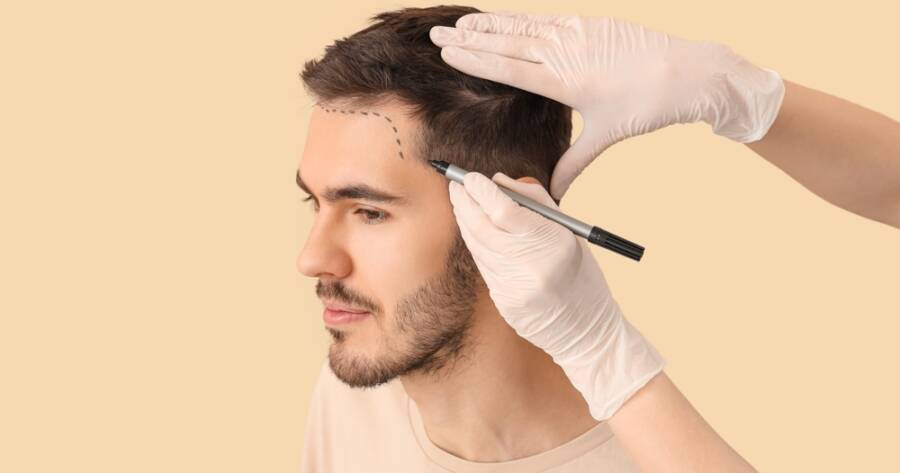Hair loss can significantly impact one’s self-esteem and confidence, leading many to explore solutions such as hair transplants. These procedures are designed to redistribute hair follicles from denser areas to areas affected by thinning or baldness. While hair transplants are increasingly popular, understanding the various techniques, potential benefits, and important considerations is crucial for those contemplating this option.
Understanding Hair Transplant Techniques
Two primary techniques dominate the realm of hair transplants: Follicular Unit Transplantation (FUT) and Follicular Unit Extraction (FUE). Both techniques involve transferring hair follicles from a donor area, typically the back or sides of the scalp, to areas experiencing hair loss. However, their methodologies differ.
- Follicular Unit Transplantation (FUT): Also known as the strip method, FUT involves removing a strip of scalp tissue from the donor area. The strip is then dissected into individual follicular units under a microscope, which are transplanted into the recipient area. While FUT can often yield a high number of grafts, it may result in a linear scar where the strip was removed.
- Follicular Unit Extraction (FUE): Unlike FUT, FUE extracts individual follicular units directly from the donor area using small punches. This method may minimize visible scarring but can be more time-consuming. FUE might be preferred by those who wish to keep their hair short, as the scarring is less noticeable.
Choosing between these techniques often involves weighing factors like recovery time, scarring, and personal preferences. Consulting with a qualified specialist is typically essential to determining which approach aligns best with your needs.
Potential Benefits of Hair Transplants
Hair transplants could offer several benefits for individuals experiencing hair loss. One of the primary advantages is the natural appearance they might provide, as transplants use your own hair follicles, making the results potentially blend seamlessly with existing hair. This can be particularly appealing for those seeking a discreet solution to hair loss.
Moreover, hair transplants are considered a long-term treatment, with many patients enjoying enduring results. After the initial shedding phase, transplanted hair generally follows the growth patterns of natural hair. It is important to note, however, that while the transplanted hair is permanent, further hair loss in untreated areas may require additional procedures.
In addition to aesthetic improvements, hair transplants might boost confidence and self-image, benefitting emotional well-being. Many recipients report feeling more youthful and revitalized following the procedure.
Important Considerations Before Undergoing a Hair Transplant
Before committing to a hair transplant, there are various factors to consider. It’s advisable to realistic expectations about the outcome. While transplants can provide significant improvements, the density and coverage may not match that of a full head of natural hair.
Cost is another consideration, as hair transplants tend to be expensive, depending on the extent of the procedure and the location of the clinic. Researching potential financing plans or insurance options may be worthwhile.
The potential risks and side effects associated with hair transplants should not be overlooked. Although complications are rare, possibilities include infection, bleeding, and scarring. Post-operative care can play a crucial role in mitigating these risks.
Choosing a qualified, experienced surgeon who can guide you through the process and assess your suitability is imperative. They can help determine whether your hair loss pattern and type are amenable to transplantation.
Recovery and Post-Procedure Care
Understanding the recovery process and post-procedure care can significantly impact your experience. Following a hair transplant, patients might experience mild swelling or discomfort in the donor and recipient areas. Pain relievers and anti-inflammatory medications could be prescribed to manage these symptoms.
Gentle handling of the transplanted area is generally recommended, including avoiding strenuous activities, direct sun exposure, and saunas for a few weeks. Washing your hair with a mild shampoo and avoiding harsh hair treatments is also often advised to protect the grafts during the initial healing phase.
Hair shedding in the weeks after a transplant is common and typically temporary. New hair growth usually becomes noticeable around three to six months post-procedure, with full results appearing after a year. Maintaining regular follow-ups with your surgeon could help ensure successful outcomes and identify any need for additional treatments.
The Future of Hair Transplantation
The field of hair transplantation continues to evolve with advancements in technology and techniques. Innovations, such as robotics and artificial intelligence, may enhance precision during follicle extraction, potentially improving outcomes and reducing errors. These technologies could provide even more minimally invasive options with shorter recovery times.
Research into stem cell therapy and hair cloning offers exciting possibilities for the future of hair restoration. These approaches could pave the way for breakthroughs in treating hair loss more effectively and restoring hair with even better results.
Staying informed about these developments and consulting with industry experts might help individuals make the best choices for their hair restoration journey.
Learn More Today!
Hair transplants offer a viable solution to those experiencing hair loss, and understanding the available techniques, potential benefits, and necessary considerations is crucial. By exploring options and consulting with a qualified professional, individuals can make informed decisions about whether this procedure suits their needs.
Bearing in mind factors such as cost, expectations, and post-operative care can ensure a smoother experience and optimal outcomes. As advancements in the field continue to unfold, staying knowledgeable about emerging technologies and innovations could further enhance the success of hair transplantation endeavors.




